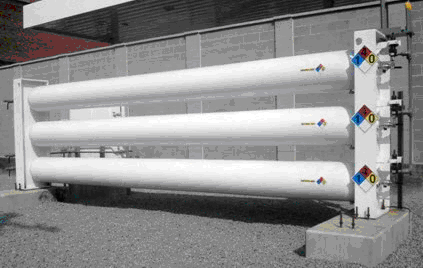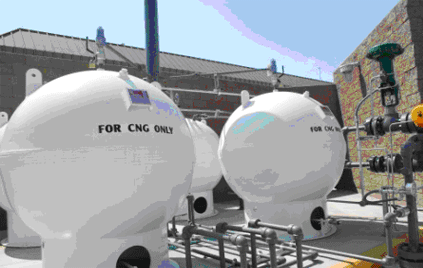One of the key components in a fast-fill CNG Fueling Station is the CNG Storage. In fact, the inclusion of ASME (American Society of Mechanical Engineers) ground storage vessels really defines a fast-fill refueling application.
How much storage needed depends on the amount of vehicles, the amount of gas each vehicle requires, and the time frame in which the vehicles need to be filled. Fast-Fill CNG Fueling Stations allow vehicles to pull up and refuel in a short period of time. In order to fuel vehicles quickly, gas must be drawn from pre-pressurized storage vessels. Unlike gasoline stations, natural gas must be stored above ground. And because it is stored at high pressures it must be contained in ASME coded vessels.
The most commonly used vessels are tubes and spheres. The tubes are usually 20 inches in diameter and approximately 23 feet long and each tube will hold 12,200 cubic feet at 5,000 psi. The spheres are usually 48 inches in diameter and will hold 12,000 cubic feet of natural gas at 5,000 psi. Normally, the tubes or spheres are arranged in a three bank cascade, meaning that there is a low bank vessel, a medium bank vessel, and a high bank vessel.
As a general rule of thumb, only 40% of the stored gas in a three bank cascade arrangement is available for refueling. This means that a 36,000 cubic foot storage cascade will deliver about 14,400 cubic feet of natural gas quickly. This equates to about 115 equivalent gallons of gasoline.
 |
 |
